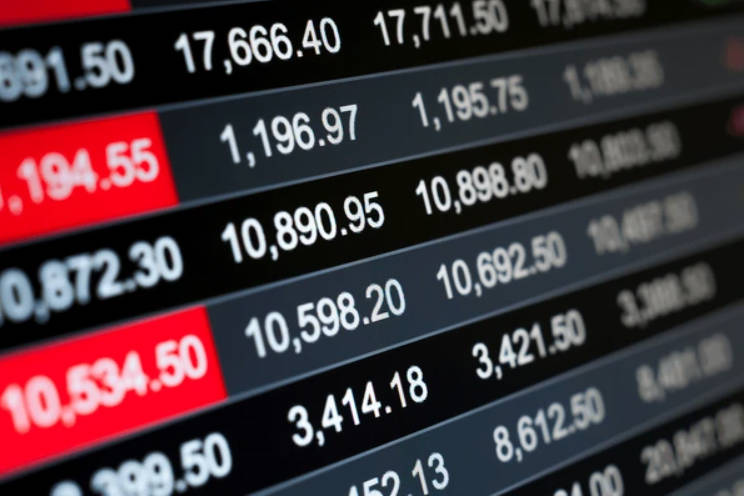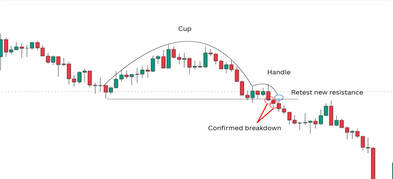Important Information
This website is managed by Ultima Markets’ international entities, and it’s important to emphasise that they are not subject to regulation by the FCA in the UK. Therefore, you must understand that you will not have the FCA’s protection when investing through this website – for example:
- You will not be guaranteed Negative Balance Protection
- You will not be protected by FCA’s leverage restrictions
- You will not have the right to settle disputes via the Financial Ombudsman Service (FOS)
- You will not be protected by Financial Services Compensation Scheme (FSCS)
- Any monies deposited will not be afforded the protection required under the FCA Client Assets Sourcebook. The level of protection for your funds will be determined by the regulations of the relevant local regulator.
Note: Ultima Markets is currently developing a dedicated website for UK clients and expects to onboard UK clients under FCA regulations in 2026.
If you would like to proceed and visit this website, you acknowledge and confirm the following:
- 1.The website is owned by Ultima Markets’ international entities and not by Ultima Markets UK Ltd, which is regulated by the FCA.
- 2.Ultima Markets Limited, or any of the Ultima Markets international entities, are neither based in the UK nor licensed by the FCA.
- 3.You are accessing the website at your own initiative and have not been solicited by Ultima Markets Limited in any way.
- 4.Investing through this website does not grant you the protections provided by the FCA.
- 5.Should you choose to invest through this website or with any of the international Ultima Markets entities, you will be subject to the rules and regulations of the relevant international regulatory authorities, not the FCA.
Ultima Markets wants to make it clear that we are duly licensed and authorised to offer the services and financial derivative products listed on our website. Individuals accessing this website and registering a trading account do so entirely of their own volition and without prior solicitation.
By confirming your decision to proceed with entering the website, you hereby affirm that this decision was solely initiated by you, and no solicitation has been made by any Ultima Markets entity.
I confirm my intention to proceed and enter this websiteUnderstanding What Are Indices in Trading
When people say “the market is up today”, they’re usually talking about an index. But what are indices in trading exactly, and why do they matter so much?
A financial index is a standardised measure used to track the performance of a specific group of assets or a market segment. Indices are one of the clearest ways to understand how a group of stocks — and by extension, an economy or sector — is performing. Indices often reflect the performance of the broader market, providing insight into overall trends.
Instead of tracking every single company, an index condenses hundreds or even thousands of stocks into a single number. Some indices represent the entire market, giving investors a comprehensive view of market movements. This makes it easier to follow trends, measure performance, and compare markets.
Getting to Know What Are Indices in Trading

At its core, an index is just a calculated average.
Imagine this: you and ten friends weigh yourselves and calculate the average weight of the group. If a few of you gain or lose weight, the average shifts too. That average represents the group without looking at each person individually.
A stock index works the same way — it takes the prices of selected companies and combines them into a single figure. This group of selected companies forms the underlying index for many investment products, such as ETFs or CFDs, which track the performance of these specific stocks. As those company share prices move, the index moves.
How Are Indices Built?
Not every index is calculated the same way. The method affects how much each company influences the index’s movement:
1. Market Capitalisation-Weighted
Larger companies (by market value) have more impact.
- Example: The S&P 500, where giants like Apple or Microsoft sway the index more than smaller firms.
2. Price-Weighted
Higher-priced stocks carry greater weight, regardless of company size. Indices like the Dow Jones Industrial Average and Nikkei are examples of price weighted indices, where a $400 stock can move the index more than a $40 stock.
3. Equal-Weighted
Every stock contributes the same, no matter its size or price.
- Think of it as every student in a classroom having one equal vote.
The performance of an index is determined by the weighted performance of its constituent stocks.
Knowing what are indices in trading and how they are built helps investors understand why some stocks move the market more than others.
Why Do Indices Matter?
Indices play an important role in both finance and the broader economy:
Market Sentiment
They provide a quick snapshot of investor confidence.
Example: If the S&P 500 is climbing steadily, it signals optimism about U.S. markets.
Economic Indicators
Indices often mirror economic strength or weakness.
Example: The FTSE 100 falling after poor UK growth data reflects worries about the economy.
Performance Benchmarks
Fund managers and analysts measure results against indices.
Example: Beating the S&P 500 is a common benchmark for U.S. investors.
Sector Insights
Indices can focus on industries like tech, energy, or healthcare.
Example: The Nasdaq 100, packed with tech companies, reflects the health of the technology sector.
This is why understanding what are indices in trading is key for anyone analysing markets.
Types of Indices

Indices are not limited to stocks. They exist across different areas of the financial markets, each serving a unique purpose. Different indices are designed to track various segments of the market and are often traded through financial instruments such as ETFs and futures. Here are the main types:
1. Stock Indices
Stock indices track the performance of a group of company shares. They are the most widely recognised type and act as barometers for economies and sectors.
- Example: S&P 500 (U.S.), FTSE 100 (UK), DAX 40 (Germany). These are national indices, each representing the performance of companies within a specific country.
- These indices allow investors to see how major corporations are performing collectively rather than individually.
These stock indices are among the most actively traded indices in global markets.
2. Sector Indices
Sector indices focus on specific industries such as technology, healthcare, or energy, allowing investors to track the performance of a particular industry. They give a clearer picture of how one part of the economy is performing.
- Example: The Nasdaq 100, heavily weighted towards technology stocks, often reflects trends in the global tech industry.
- If technology companies are thriving, the Nasdaq usually rises even if other sectors are struggling.
3. Commodity Indices
Commodity indices measure the performance of raw materials like oil, gold, silver, wheat, and soybeans.
- Example: The S&P GSCI (Goldman Sachs Commodity Index) tracks a broad basket of commodities.
- These indices are widely used to monitor inflation pressures, since commodity prices often rise when costs in the economy increase.
4. Currency Indices
Currency indices reflect the strength of one currency compared to others.
- Example: The U.S. Dollar Index (DXY) measures the dollar’s value against a basket of major currencies, including the euro, yen, and pound.
- These indices are particularly useful for traders in forex markets, as they show how a currency is performing globally rather than just against a single pair.
5. Volatility Indices
Volatility indices track market expectations of price swings. They are sometimes called “fear indices” because they rise when uncertainty is high.
- Example: The VIX (Volatility Index) measures expected volatility in the U.S. stock market.
- A rising VIX often signals fear or risk aversion among investors, while a low VIX suggests confidence and stability.
Popular Global Indices
Here are some of the most followed indices worldwide:
- United States: S&P 500, Dow Jones, Nasdaq 100
- Europe: FTSE 100 (UK), DAX 40 (Germany), CAC 40 (France)
- Asia: Nikkei 225 (Japan), Hang Seng (Hong Kong), SSE Composite (China)
- Global: MSCI World Index (23 developed countries), MSCI Emerging Markets Index (24 emerging economies)

Think of these as dashboards — by checking a handful of global indices, you instantly see how different parts of the world are performing.
How Are Indices Used in Finance?
Indices are not just numbers for the news headlines — they serve several practical purposes across the financial world:
- Benchmarking – Portfolios are measured against indices like the S&P 500 to judge performance.
- Economic Signals – Governments and analysts watch indices such as the DAX 40 to gauge economic health.
- Sector Tracking – Industry indices highlight leaders and laggards, e.g., tech-focused benchmarks.
- Sentiment Gauges – Volatility indices like the VIX reflect investor fear or confidence.
- Global Comparisons – Indices such as the MSCI World allow quick comparison across regions.
Conclusion
Indices are more than just numbers. They represent the collective performance of companies, sectors, and economies, turning complex data into a single, easy-to-read figure.
By learning what are indices in trading, investors and traders can quickly understand market sentiment, economic health, and sector trends without having to track every stock individually.
Disclaimer: This content is provided for informational purposes only and does not constitute, and should not be construed as, financial, investment, or other professional advice. No statement or opinion contained here in should be considered a recommendation by Ultima Markets or the author regarding any specific investment product, strategy, or transaction. Readers are advised not to rely solely on this material when making investment decisions and should seek independent advice where appropriate.












